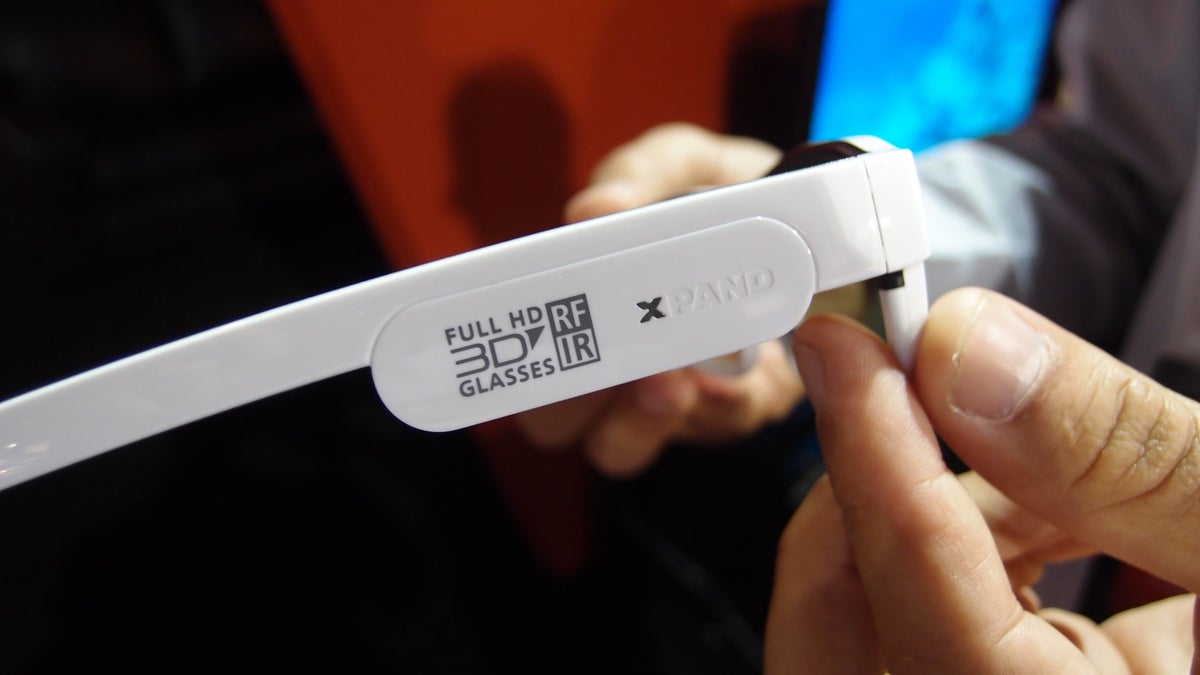Will $20 glasses, universal standard polish active 3D TV's apple?
A lack of affordable glasses and interoperability has plagued active 3D since its launch, but glasses and standards purveyor XpanD, along with Sony, Panasonic and Samsung, aims to address those issues.

LAS VEGAS--Active 3D glasses that come free with the TV, don't cost too much for extra pairs, and work with other brands might help win a few more 3D TV naysayers.
Ami Dror, Chief Strategy Officer for 3D glasses maker XpanD, told CNET that he expects active 3D glasses to cost as little as $20 each before the end of the year. That's $10 less than the current least-expensive such glasses from Samsung, which retail for $30 per pair. Active glasses from Sony and Panasonic currently cost more.
But current active 3D glasses don't work across brands; those Samsungs explicitly say "Compatible with select 2011 Samsung 3D TVs," for example. That's the issue the Full HD 3D Glasses Initiative sets out to solve. The idea is that active 3D glasses certified by the Initiative, expected to begin selling later this year, will work with any compatible active 3D TV. XpanD, much like HDMI for cables, will handle the certification.
Dror confirmed that so-certified glasses sold by Sony, Samsung and Panasonic will also work with each others' 2012 active 3D TVs. XpanD and other third-party glasses providers are also on-board, including lesser-known global powerhouses like Changhong. Their participation could push entry-level 3D active eyewear prices even further.
Making active 3D easier to use
Passive 3D has a couple of practical advantages over active. Aside from the fact that its glasses are cheaper (or free with a five-finger discount from your local multiplex), you can just pick them up, put them on, and they work, regardless of what passive TV you're watching. Battery-powered active 3D specs required by active 3D TVs need to be turned on, synced to the TV, and even then it's often unclear whether they're actually, well, active.
Dror told CNET about another technology XpanD is devloping in partnership with 3D TV makers. Dubbed a "Fully Automated 3D Ecosystem," it can automatically tell the TV to engage the 3D signal when the wearer dons the glasses, eliminating the need for an "on/off" switch or button on the glasses. So-equipped glasses would have a sensor that could tell when the specs were worn, and communicate with the TV via Bluetooth to engage 3D.
Once 3D was engaged, an on-screen indicator would appear to reassure watchers that, yes, 3D is actually on. Samsung's 2011 TVs had just such an indicator, by virtue of their Bluetooth synching, and I really appreciated it.
He said that with future 3D TV broadcasts being simulcast in both 2D and 3D, watchers will easily be able to migrate between the two simply by putting on glasses. I asked about integrating features like Dual Play (seen on Sony's Playstation 3D TV for same-screen multiplayer) and the Dual View feature demoed by Samsung (where two different viewers in a room can enjoy two different TV shows on the same set) and he assured me that provisions for such features were also built into the Full HD 3D certification protocol.
Chicken-and-egg problem
Of course, when I cited issues with active 3D glasses, Dror was quick to point out the main reason why 3D TV has failed to catch on: lack of content. Until that changes, I think 3D TV will continue to be seen as a gimmick, regardless of how cheap the glasses are or even if they become unnecessary.
Updated March 30, 2012 to clarify compatibility with only 2012 televisions.

